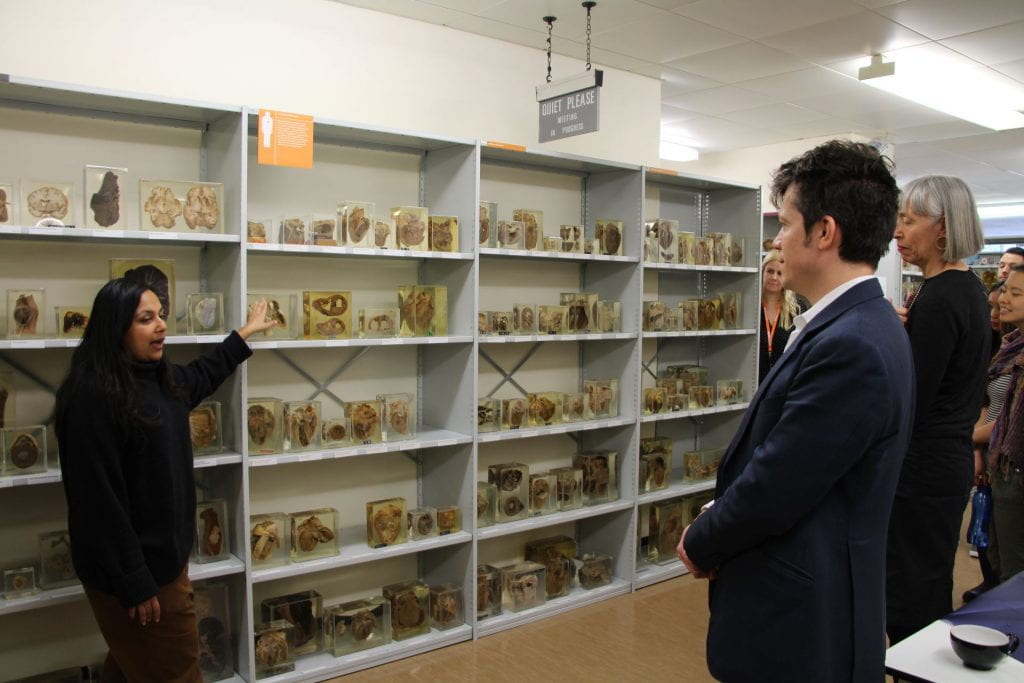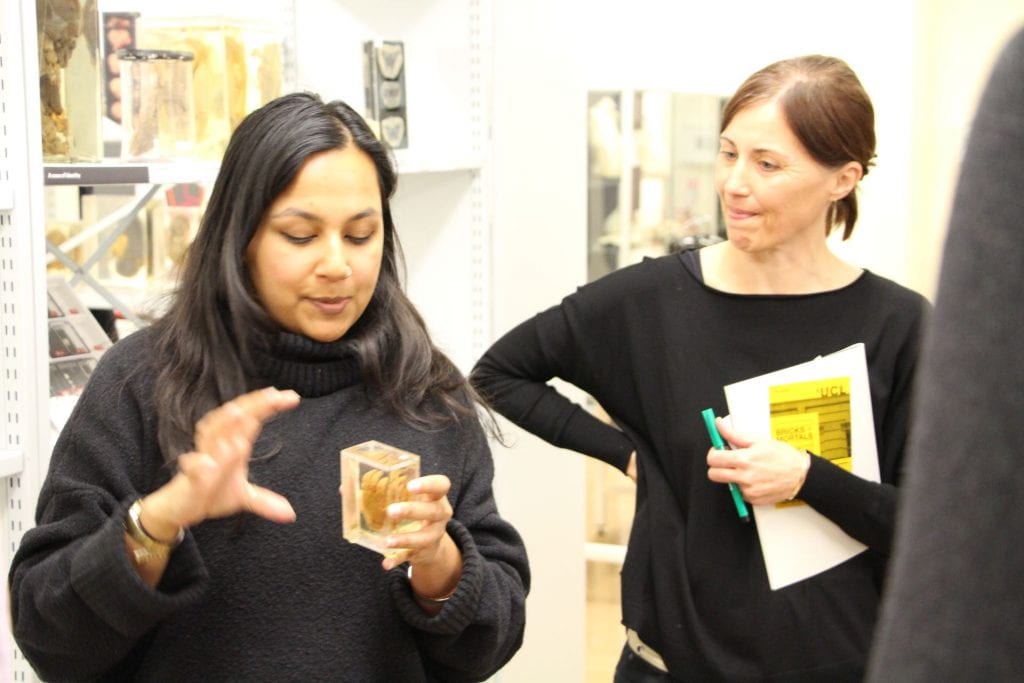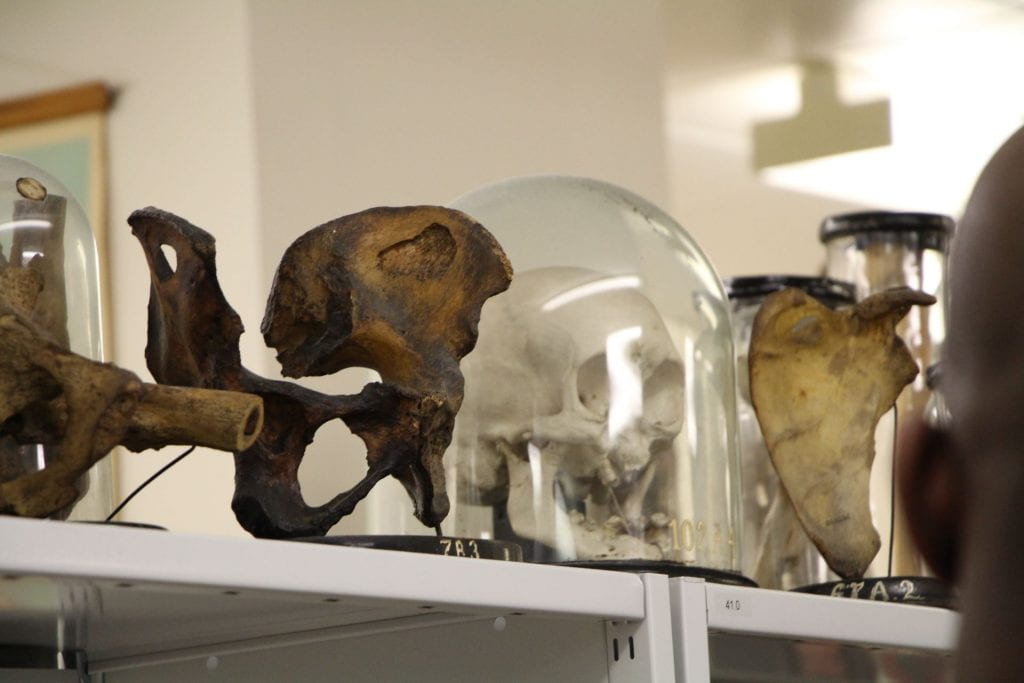Past and Present: The study of anatomy from a screenwriter
By Briony Fleming, on 11 June 2019
This post has been written by Wilma Smith, a screenwriter in the EIFF Ideas Lab program.
Over the last year, it’s been quite something to tell others about how fantastic it has been to talk to so many scientists… Why?
Well, I was very lucky to be one of eight screenwriters to be selected onto the Edinburgh International Film Festival Ideas Lab (EIFF), which is supported by the Wellcome Trust and led by script editor and consultant Kate Leys. I had known about the scheme for a few years and I was unsure on how the combination of the world of science and biology would work with creative script-writing. I started making films when I was 13 years old: stop frame animations and crudely edited together TV clips to music. I also started writing stories and scripts then too. As a side note, I was hopeless studying science at school and barely passed my exams in biology. But I did pass and now, in my 40’s, I was raring, like I mentioned earlier, to go for it!
Our second Ideas Lab workshop was going to be in the Pathology Collections at UCL, and while we’d be meeting researchers in the sciences, we were also thinking about a wider view of health, history and wellness, and exploring the connections between research, curating, storytelling and science. Arriving the night before through the beautiful Art Deco style underground of Belsize Park in Hampstead and into that lush golden hour sunset of an orange and pink sky, set the scene of the past and present.
Subhadra Das the Pathology and Science Collections Curator did not disappoint in the Monday morning session that followed. She brought the tour of all the jarred specimens, body parts, perfectly displayed and organised in a coloured coded system, to life. That’s how I saw it. I had been to the Hunterian Museum at Glasgow University, and had seen this sort of thing before which was, at times, gruesome, but this time, with her guidance, each jar, every body part that I saw, really made me think about the individual person. Who were they? What happened to them? Most coming from over 150 years ago, how did they end up being on the dissection table and their body parts studied? Subhadra also told us about the practice of student doctors from the past using real skeletons and how most skeletons from that time came from India, meaning that even the bodies were taken by the British empire. Everything she told us was so interesting. I am a mother of 2 young children, and I personally found the many unborn foetuses difficult so I was surprised that I didn’t leave the workshop that day feeling overall sad from thinking about how at one point in time they were all living. People living and working and raising families.
The entire day was shared with researchers in their own specialised interests and who took the time out to spend it with us writers. In the afternoon, we had 15 minute long one to one chats with them. This was the chance for us to listen to what they did and ask questions. There were too many wonderful and fascinating things spoken about by each researcher to mention, but it was hugely inspiring. The whole point of the workshop was for the writers to be inspired with an idea, and I did indeed come away with a lot. From my experience, it could be just a key scientific term, results and/or predictions that could trigger an idea for me to develop further. I found I was drawn towards a thrombosed vein which made me reflect on a situation which occurred personally for me many years ago and which has pushed me to develop and channel this in a creative context with my fictional writing since my visit.
You can see I’m the sort of creative person who over flows in enthusiasm, hopefully not too annoyingly. But when I’ve been given any opportunity to learn and develop in my creative working life, and in this occasion my script-writing, I go for it!
It’s been an incredible opportunity and it has given me a new sense of finding inspiration in that moment of that dreaded writers block, or as I like to call it, distraction tasks: doing anything from clipping finger nails to housework and taking the bins out, doing absolutely anything because I cannot think of an idea. I’d like to thank everyone who was involved at UCL for facilitating a great day, all the researchers who gave up their time, all of the team at EIFF and my fellow writers on the program. It was a shared learning experience which I am very grateful to be a part of.
One Response to “Past and Present: The study of anatomy from a screenwriter”
- 1
 Close
Close







Fascinating stuff!